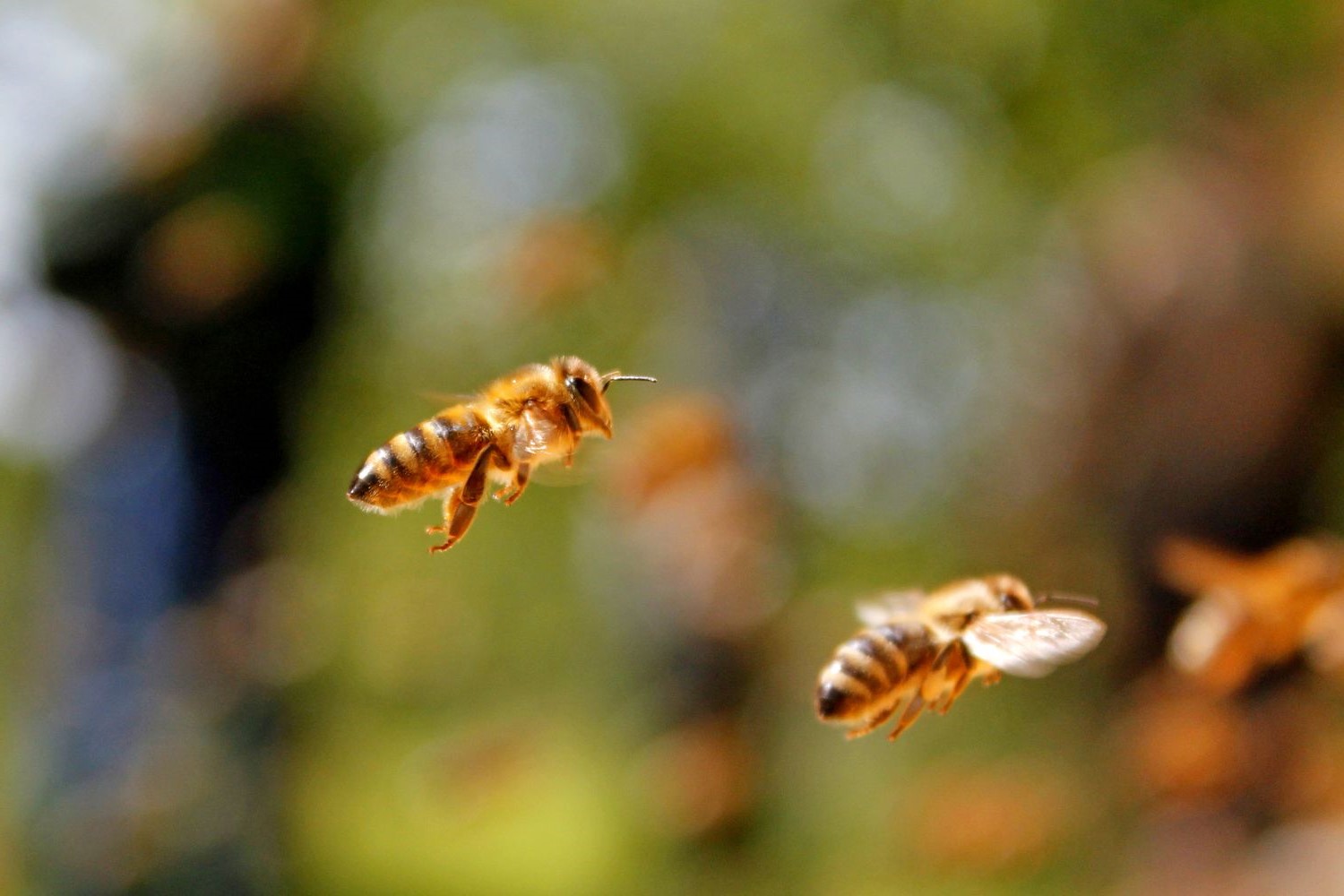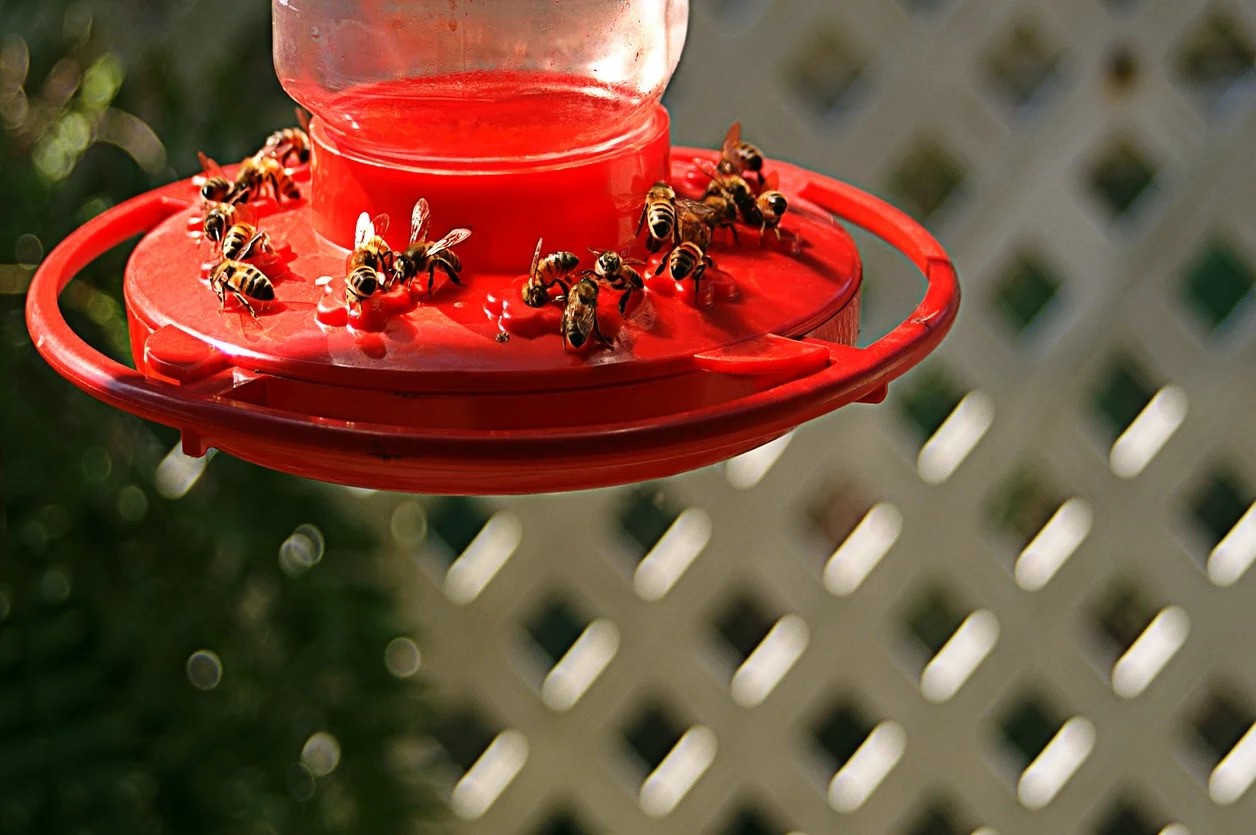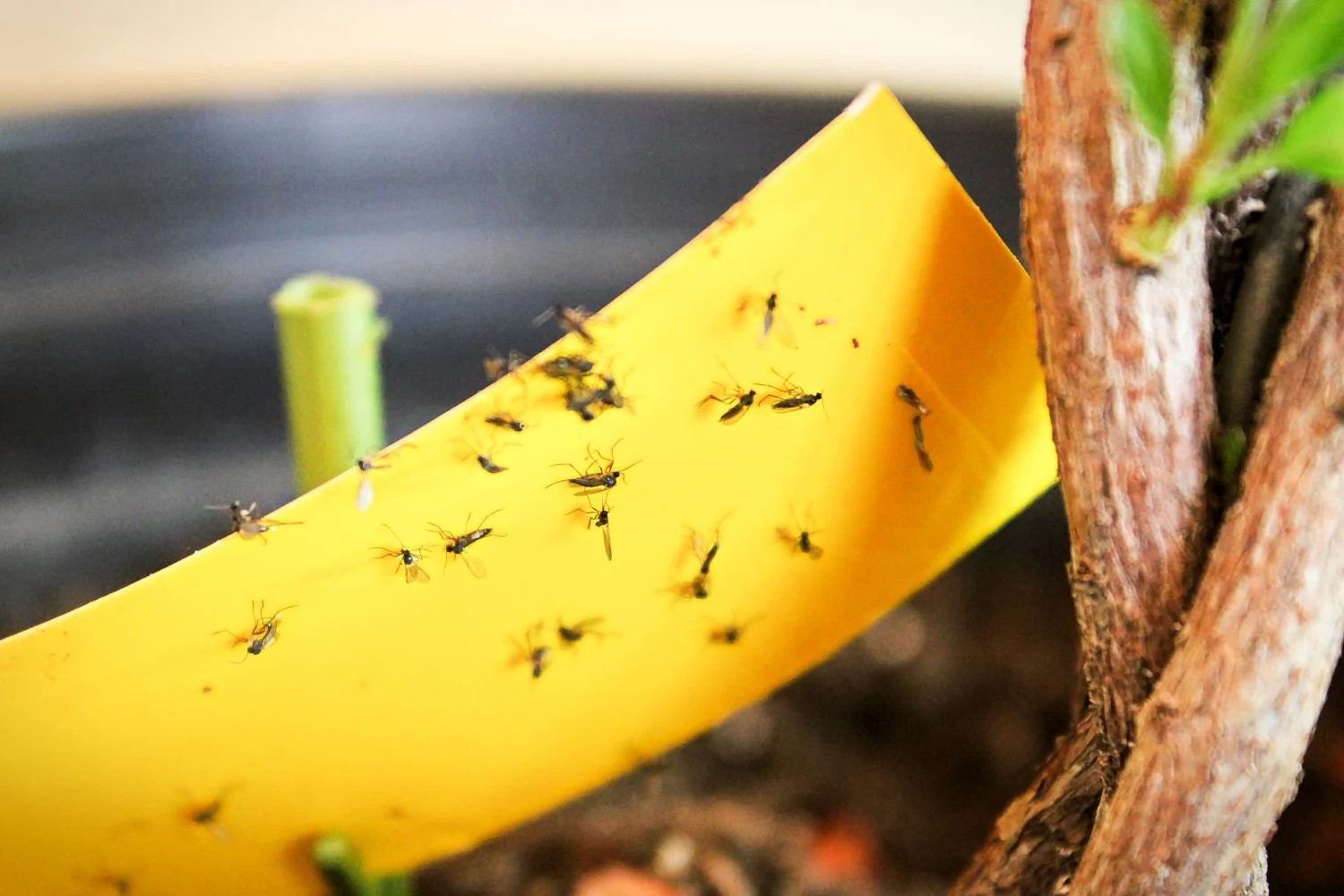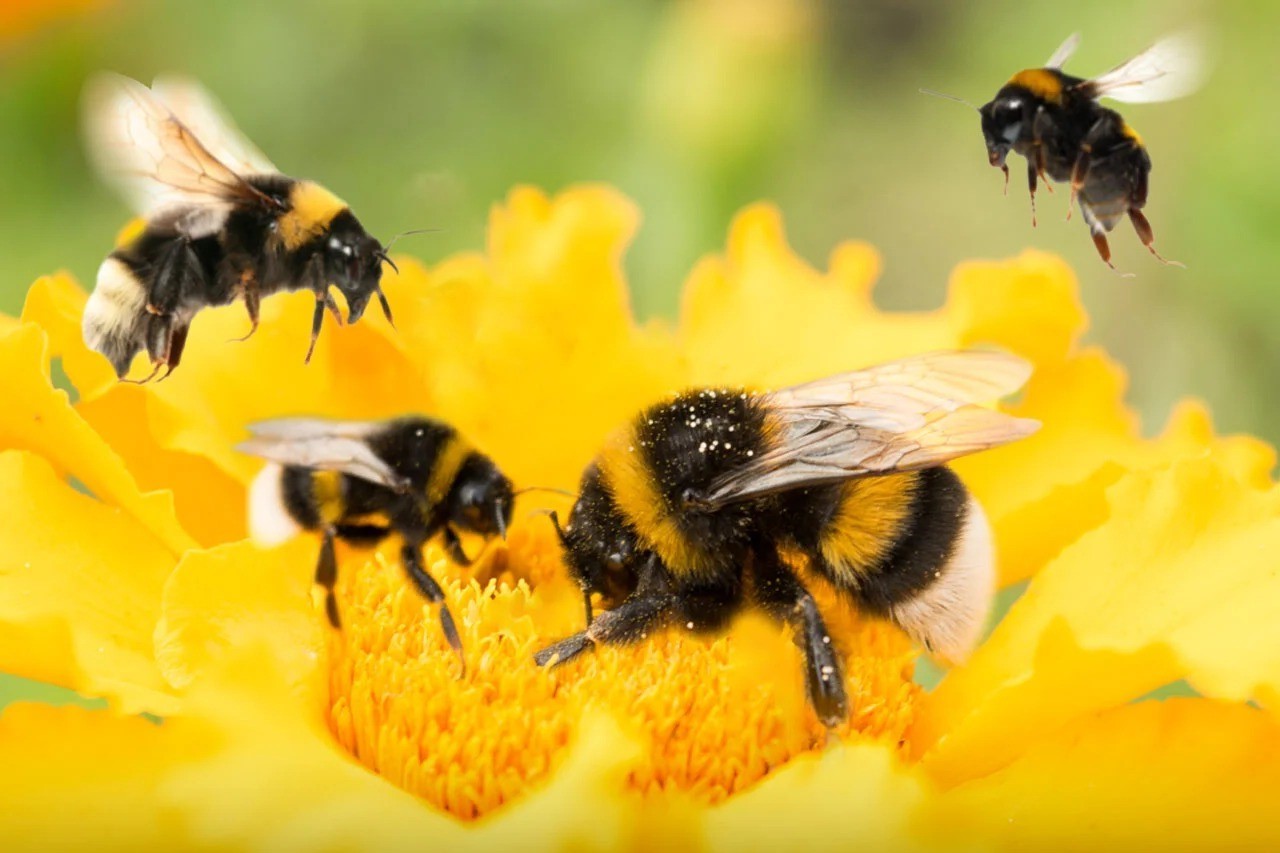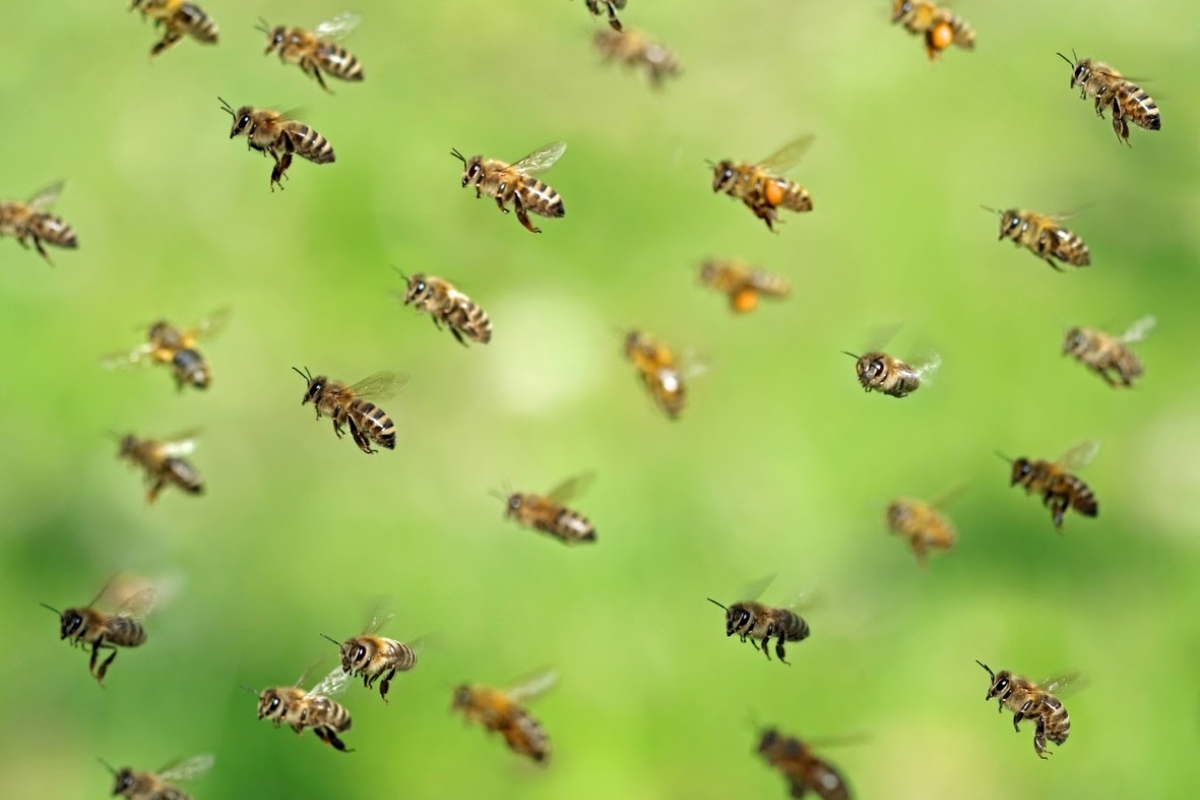Home>Home and Garden>Effective Methods For Eliminating Ground Bees
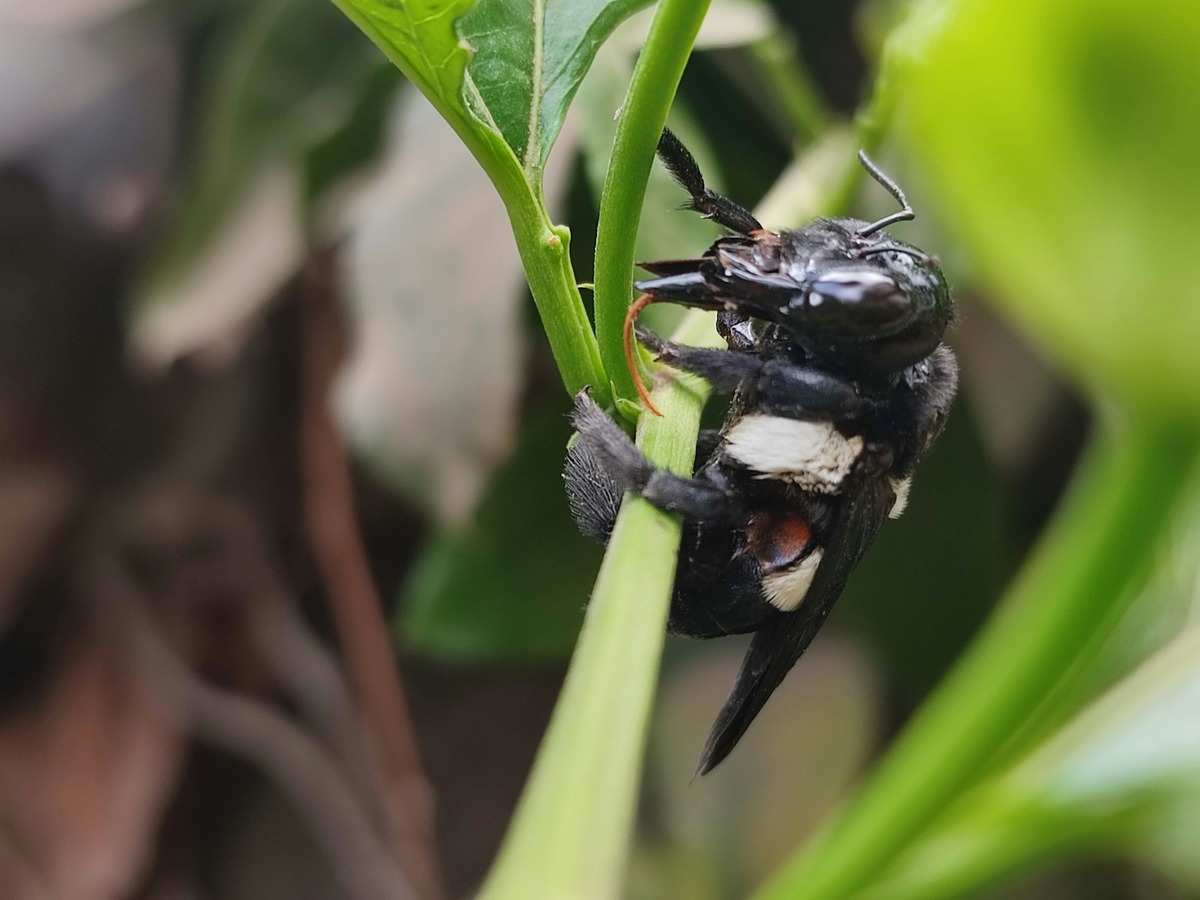

Home and Garden
Effective Methods For Eliminating Ground Bees
Published: February 20, 2024
Discover effective methods for eliminating ground bees in your home and garden. Get expert tips and advice for a bee-free environment.
(Many of the links in this article redirect to a specific reviewed product. Your purchase of these products through affiliate links helps to generate commission for Noodls.com, at no extra cost. Learn more)
Table of Contents
Introduction
Dealing with ground bees can be a challenging and daunting task for homeowners and garden enthusiasts. These buzzing insects, also known as solitary bees, often build their nests in the ground, creating a potential hazard for those who frequent the area. While ground bees are beneficial pollinators and generally non-aggressive, their presence can pose a threat, especially for individuals allergic to bee stings. Understanding effective methods for eliminating ground bees is crucial for maintaining a safe and enjoyable outdoor environment.
In this comprehensive guide, we will explore various natural and chemical approaches to address ground bee infestations. Additionally, we will delve into the identification of ground bee nests and offer valuable insights into preventing their return. By gaining a deeper understanding of ground bees and implementing the appropriate elimination methods, homeowners can reclaim their outdoor spaces and ensure a bee-free environment without causing harm to the ecosystem.
Let's embark on this journey to discover practical and eco-friendly solutions for managing ground bee populations, safeguarding our outdoor spaces, and promoting a harmonious coexistence with nature.
Read more: How To Get Rid Of Ground Bees
Understanding Ground Bees
Ground bees, also known as solitary bees, are a diverse group of bees that construct their nests in the ground. Unlike honeybees and bumblebees, ground bees are solitary creatures, meaning that each female bee creates and tends to her own nest without the assistance of a colony. These bees are valuable pollinators, playing a crucial role in the ecosystem by aiding in the reproduction of flowering plants.
One of the most common types of ground bees is the Andrenidae family, which includes mining bees. These bees are typically small to medium-sized, with varying colors ranging from black and brown to metallic green or blue. Ground bees are distinguishable by their fuzzy appearance and the habit of nesting in the ground, often creating small, volcano-like mounds of soil around the entrance to their nests.
Ground bees are generally non-aggressive and rarely sting unless provoked. Unlike social bees, such as honeybees, ground bees do not have a hive or a queen to protect, which contributes to their docile nature. However, their nesting habits can lead to conflicts with human activities, especially in areas where foot traffic or lawn maintenance is common.
Understanding the behavior and nesting habits of ground bees is essential for effectively managing infestations and minimizing potential conflicts. By gaining insights into their characteristics and ecological significance, homeowners can approach the task of eliminating ground bees with a balanced perspective, ensuring the safety of both humans and these valuable pollinators.
Identifying Ground Bee Nests
Identifying ground bee nests is the crucial first step in effectively addressing a ground bee infestation. Unlike social bees that build hives above ground, ground bees construct their nests in the soil, often creating small, inconspicuous mounds that serve as entry points to their underground dwellings. These nests are typically found in well-drained, sandy, or loamy soil, making lawns, gardens, and open areas with sparse vegetation ideal locations for ground bee colonies.
To identify ground bee nests, observe the presence of small, volcano-like mounds of soil with a central hole, resembling miniature ant hills. These mounds are the result of the bees excavating the soil to create tunnels and chambers for their nests. Additionally, ground bees may exhibit noticeable flight patterns near their nests, flying low to the ground as they enter and exit their burrows.
Another method for identifying ground bee nests involves conducting a simple test using a non-toxic, biodegradable insecticidal dust. In the evening when ground bees are less active, sprinkle a small amount of the dust around the suspected nest entrances. The following day, observe the areas for bee activity. If ground bees are present, they will track the dust into their nests, confirming the location of their colonies.
Furthermore, paying attention to the timing of bee activity can aid in nest identification. Ground bees are most active during the spring and early summer when they emerge from their nests to forage for pollen and nectar. Observing their activity patterns during these seasons can provide valuable clues about the location of their nests.
It is important to approach the identification of ground bee nests with caution and respect for these beneficial pollinators. By recognizing the physical characteristics of their nests and observing their behavioral patterns, homeowners can accurately pinpoint the locations of ground bee colonies, laying the groundwork for implementing targeted elimination methods.
Understanding the distinct features of ground bee nests and the behaviors of these solitary bees is essential for effectively managing infestations and ensuring the safety of outdoor spaces. By honing the ability to identify ground bee nests, homeowners can take proactive measures to address infestations and create a harmonious environment that balances the needs of humans and ground bees.
Natural Methods for Eliminating Ground Bees
When it comes to addressing ground bee infestations, employing natural methods for elimination is not only effective but also environmentally friendly. These approaches aim to mitigate ground bee populations without resorting to chemical interventions, thereby minimizing potential harm to beneficial insects and the surrounding ecosystem. By harnessing the power of natural elements and strategic techniques, homeowners can effectively manage ground bee infestations while promoting a sustainable and eco-conscious approach to pest control.
1. Flooding the Nests
One natural method for eliminating ground bees involves flooding their nests with water. This approach capitalizes on the bees' vulnerability to excessive moisture, as their underground tunnels and chambers can become inundated, forcing the bees to abandon their nests. To execute this method, locate the entrances to the ground bee nests and pour a substantial amount of water into the holes, ensuring that the tunnels are thoroughly saturated. Repeat this process as needed to displace the bees and deter their reestablishment of nests in the same location.
2. Planting Bee-Repellent Vegetation
Strategic landscaping with bee-repellent plants can serve as a natural deterrent for ground bees. Certain aromatic herbs and flowers, such as mint, citronella, and marigolds, possess natural repellent properties that can discourage ground bees from establishing nests in the vicinity. By incorporating these plants into the landscape, homeowners can create an environment that is less attractive to ground bees, thereby reducing the likelihood of infestations.
3. Utilizing Essential Oils
The use of essential oils, particularly those with strong scents such as peppermint, eucalyptus, and tea tree oil, can be an effective natural method for repelling ground bees. By diluting these essential oils with water and spraying the solution around the perimeter of the infested area, homeowners can create a deterrent barrier that discourages ground bees from nesting in the vicinity. Additionally, placing cotton balls soaked in essential oils near ground bee nests can further deter their presence.
4. Deploying Homemade Traps
Homemade traps can be constructed using simple materials to capture ground bees without causing harm to the surrounding environment. One effective trap design involves burying a container, such as a plastic bottle with the top cut off, near the ground bee nests. Fill the container with a sweet, sugary solution to attract the bees, and cover it with a transparent material, such as plastic wrap, punctured with small holes for the bees to enter. Once inside, the bees become trapped, allowing for their safe relocation away from the infested area.
By implementing these natural methods for eliminating ground bees, homeowners can effectively manage infestations while prioritizing environmental sustainability and the well-being of beneficial insects. These approaches offer viable alternatives to chemical interventions, promoting a harmonious coexistence with nature and the preservation of outdoor spaces.
Chemical Methods for Eliminating Ground Bees
When natural methods for eliminating ground bees may not provide the desired results, chemical interventions can offer an effective solution for managing infestations. It is important to approach the use of chemical methods with caution, ensuring the safety of both humans and the surrounding environment. By employing targeted insecticidal products and adhering to responsible application practices, homeowners can address ground bee infestations while minimizing potential risks.
1. Insecticidal Dusts and Sprays
Insecticidal dusts, such as carbaryl or permethrin-based products, can be applied directly to ground bee nests to effectively eliminate the infestation. These dusts are designed to penetrate the tunnels and chambers of the nests, targeting the bees within. When using insecticidal dusts, it is essential to apply the product in the evening when ground bees are less active, ensuring maximum exposure to the treatment. Additionally, insecticidal sprays formulated specifically for ground bees can be used to treat infested areas, providing a targeted approach to pest control.
2. Professional Pest Control Services
In cases where ground bee infestations pose significant challenges or risks, seeking the expertise of professional pest control services can provide a comprehensive and effective solution. Pest control professionals have access to specialized insecticidal products and equipment designed for managing ground bee infestations. By enlisting the services of experienced professionals, homeowners can ensure the safe and thorough elimination of ground bees while receiving expert guidance on preventing future infestations.
3. Precautions and Considerations
When utilizing chemical methods for eliminating ground bees, it is crucial to prioritize safety and environmental responsibility. Always read and follow the instructions provided by the insecticidal product manufacturer, adhering to recommended application rates and safety precautions. Additionally, consider the potential impact of chemical interventions on beneficial insects and the surrounding ecosystem, aiming to minimize unintended consequences while addressing the infestation effectively.
By approaching the use of chemical methods for eliminating ground bees with mindfulness and adherence to best practices, homeowners can effectively manage infestations while maintaining a balanced approach to pest control. These methods offer targeted and efficient solutions for addressing ground bee infestations, providing homeowners with the means to reclaim their outdoor spaces and ensure a safe and enjoyable environment.
Preventing Ground Bees from Returning
After successfully eliminating ground bee infestations, it is essential to implement preventive measures to deter their return and maintain a bee-free outdoor environment. By proactively addressing the factors that attract ground bees and creating an inhospitable environment for nesting, homeowners can significantly reduce the likelihood of future infestations. Here are effective strategies for preventing ground bees from returning:
1. Soil Modification
Modifying the soil conditions in areas prone to ground bee infestations can discourage their nesting activities. Improving drainage and reducing excess moisture in the soil can make the environment less favorable for ground bees. Additionally, incorporating amendments such as coarse sand or gravel into the soil can create an inhospitable substrate for ground bee nesting, deterring their establishment in the treated areas.
2. Lawn Maintenance
Regular lawn maintenance practices, such as mowing the grass at the appropriate height and minimizing bare patches in the lawn, can contribute to preventing ground bees from returning. Well-maintained lawns with dense and healthy turf are less attractive to ground bees for nesting, reducing the likelihood of infestations. By promoting a robust and well-manicured lawn, homeowners can create an environment that is less conducive to ground bee activities.
3. Sealing Nesting Sites
Identifying and sealing potential nesting sites, such as abandoned rodent burrows or gaps in the landscape, can effectively prevent ground bees from establishing new colonies. By addressing these potential nesting locations, homeowners can eliminate opportunities for ground bees to create underground dwellings, minimizing the risk of infestations in the future.
4. Bee-Repellent Landscaping
Strategic landscaping with bee-repellent plants and aromatic herbs can serve as a natural deterrent for ground bees. By incorporating these plants into the landscape, homeowners can create an environment that is less attractive to ground bees, reducing the likelihood of infestations. Additionally, maintaining a diverse range of flowering plants can attract other pollinators, potentially diverting ground bees away from the area.
5. Regular Monitoring
Consistent monitoring of outdoor spaces for signs of ground bee activity is crucial for early detection and intervention. By remaining vigilant and promptly addressing any indications of ground bee nesting, homeowners can prevent infestations from becoming established. Regular inspections of the property, especially during the spring and early summer when ground bees are most active, can aid in identifying and addressing potential nesting sites.
By implementing these preventive strategies, homeowners can create an environment that is less conducive to ground bee nesting, effectively deterring their return. Through proactive soil modification, lawn maintenance, sealing of nesting sites, strategic landscaping, and regular monitoring, homeowners can safeguard their outdoor spaces and promote a harmonious coexistence with nature.
Conclusion
In conclusion, effectively managing ground bee infestations requires a balanced approach that prioritizes the safety of both humans and beneficial insects while promoting environmental sustainability. By gaining a deeper understanding of ground bees and their nesting habits, homeowners can implement targeted methods for identifying and eliminating infestations, creating a harmonious outdoor environment that balances the needs of humans and nature.
Natural methods for eliminating ground bees offer eco-friendly and sustainable solutions for managing infestations. Techniques such as flooding the nests, planting bee-repellent vegetation, utilizing essential oils, and deploying homemade traps provide viable alternatives to chemical interventions, minimizing potential harm to the ecosystem. These natural approaches empower homeowners to address ground bee infestations while promoting a respectful coexistence with these valuable pollinators.
When natural methods may not provide the desired results, chemical interventions can offer effective solutions for managing ground bee infestations. By employing targeted insecticidal products and seeking professional pest control services when necessary, homeowners can address infestations while adhering to responsible application practices and minimizing potential risks.
Furthermore, preventing ground bees from returning is essential for maintaining a bee-free outdoor environment. Through soil modification, lawn maintenance, sealing of nesting sites, bee-repellent landscaping, and regular monitoring, homeowners can create an environment that is less conducive to ground bee nesting, effectively deterring their return and promoting a sustainable coexistence with nature.
By integrating these comprehensive approaches, homeowners can reclaim their outdoor spaces and ensure a safe and enjoyable environment while preserving the vital role of ground bees as pollinators in the ecosystem. Understanding the significance of ground bees and implementing responsible methods for managing infestations are essential steps toward fostering a balanced and sustainable relationship between humans and nature.
In essence, by embracing a holistic approach that encompasses understanding, prevention, and responsible intervention, homeowners can create outdoor spaces that harmoniously coexist with ground bees, promoting the well-being of both humans and these valuable pollinators.
